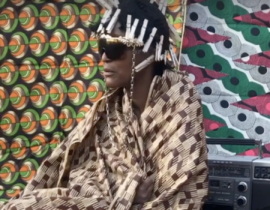
Let’s talk about art for a second.
In Amsterdam, a city known for its artistic heritage, two school friends embarked on a journey that would lead them to challenge the digital status quo. Graphic designer Paul Bille collaborated with his friend Lukas Engelhardt for a project that comments on the harsh realities of urban living. Together, they found a parallel in the digital domain that sparked an innovative project. This is the story of “How-to Computer,” a guide to reclaiming digital autonomy.
Despite its cultural scene, Amsterdam also harbors less idyllic aspects of modern life. One aspect is a contentious law allowing renters to be removed from their homes with little to no notice. This struck a chord with Bille. He drew an analogy between this precarious existence and how giant corporations like Microsoft or Amazon can wield control over our digital lives. This realization set him and Engelhardt on a path toward self-sufficiency in the digital realm.
The duo’s venture into self-hosting was not just an act of defiance against corporate giants, but also a journey back to the essence of computing. Self-hosting – running one’s web services independently rather than relying on third-party platforms – represented freedom. However, achieving this independence was fraught with challenges. Through trial and error, Bille and Engelhardt navigated these uncharted waters, learning valuable lessons along the way.
Their experiences culminated in creating “How-to Computer,” a comprehensive guide designed to empower others to embark on their self-hosting adventures without repeating their mistakes. What sets “How-to Computer” apart is its practical advice and underlying philosophy. As Paul eloquently puts it, “Self-hosting is not merely about escaping corporate clutches; it’s about reconnecting with what computers really are.” This statement encapsulates their mission: to demystify technology and make it accessible to all.

Contrary to popular belief, self-hosting does not require vast financial resources or cutting-edge hardware. Bille emphasizes that people can start self-hosting on various devices, including Android smartphones. This inclusivity ensures that more individuals can regain control over their digital lives without significant investment.
“How-to Computer” stands as a testament to human ingenuity and resilience. By sharing their knowledge freely, Bille and Engelhardt are helping others avoid common pitfalls and fostering a community of like-minded individuals dedicated to personal sovereignty in cyberspace.
What makes this project even more compelling is its grounding in real-world experiences. Both Bille and Engelhardt have faced obstacles most would find daunting: technical glitches, legal uncertainties, and the ever-present shadow of corporate surveillance. Yet, they emerged victorious and eager to share what they’ve learned with others.
Their journey underscores an important message: technology should serve humanity, not bind it. In an era where screens and servers owned by others increasingly mediate our lives, initiatives like “How-to Computer” remind us that alternatives exist if we’re brave enough to pursue them.
As we navigate through our digitized landscapes, it’s heartening to know pioneers like Paul Bille are charting paths toward greater autonomy online. Their work encourages us to question the status quo and explore how we might reclaim control over our digital footprints.
“How-to Computer” represents more than just a guide; it symbolizes hope, illuminating our collective capacity for innovation in pursuit of independence.
Check out Paul Bille’s website https://paulbille.com.




